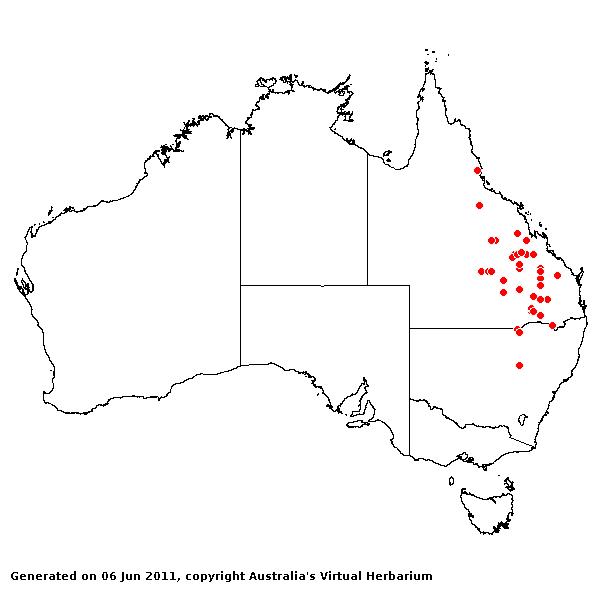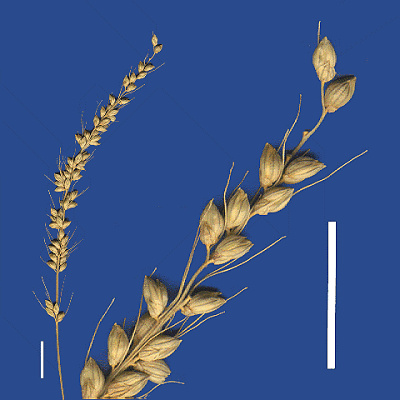Setaria paspalidioides Vickery. Telopea
1: 42 (1975).
Classification. (GPWG 2001) : Subfamily
Panicoideae. Paniceae.
Type of Basionym or
Protologue Information: Australia:
New South Wales:
Western Plains: Gulargambone, 27 Apr 1936, E.C. Mathes s.n. (HT:
NSW-9027).
Key references
(books and floras): [2002] D.Sharp & B.K.Simon, AusGrass, Grasses of
Australia,
[2008] S.W.L.Jacobs, R.D.B.Walley & D.J.B.Wheeler, Grasses of New South
Wales (370).
Illustrations:
[2008] S.W.L.Jacobs, R.D.B.Whalley & D.J.B.Wheeler, Grasses of New South
Wales, 4th edn (370).
Habit.
Perennial. Rhizomes absent. Culms erect, 30–100 cm tall. Mid-culm nodes glabrous
or pubescent. Leaf-sheaths antrorsely scabrous, hairy. Ligule a fringe of
hairs, 1.5 mm long. Leaf-blades flat or conduplicate, 4.5–30 cm long, 4–9 mm
wide. Leaf-blade surface smooth or scabrous, glabrous or indumented.
Inflorescence.
Inflorescence solid, a panicle. Panicle linear.
Spikelets.
Spikelets pedicelled, 1 in the cluster. Involucre composed of bristles. Fertile
spikelets 2-flowered, the lower floret barren (rarely male), the upper fertile,
comprising 1 basal sterile florets, comprising 1 fertile floret(s), without
rachilla extension, elliptic or obovate, dorsally compressed, 2.8–3.1 mm long.
Glumes. Glumes
thinner than fertile lemma. Lower glume ovate, membranous, without keels, 5
-nerved. Upper glume elliptic or orbicular, 2.3–3 mm long, membranous, without
keels, 7–9 -nerved. Florets. Basal sterile florets 1, male or barren,
with palea. Lemma of lower sterile floret 100 % of length of spikelet,
membranous, 5 -nerved.
Fertile lemma 2.8–3.1
mm long, without keel. Lemma apex mucronate. Anthers 3. Grain 1.75 mm long.
Continental
Distribution: Australasia.
Australian
Distribution: Queensland, New South Wales.
Queensland: Leichhardt, Mitchell,
Warrego, Maranoa. New South Wales:
North-Western Plains.
Notes.
The morphological features of the inflorescence of this species are similar to Paspalidium.
Setaria paspalidioides is closely related to S. australiensis,
but differs in having smaller spikelets, a sparse infloresence and a scabrous
main axis.
In Brigalow forests,
tropical and subtropical sub-humid woodlands, and semi-arid shrub woodlands.
Flowers Jan.-Sept.



